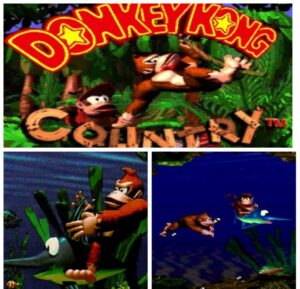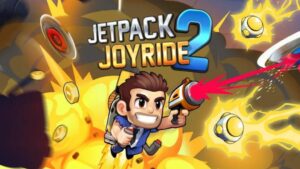The Simpsons have a long and storied history of videogame tie-ins. The show’s massive popularity in the early 90s with both young and adult audiences lent itself well to mass merchandising. The series of tie-in games started strong with the Simpsons arcade game, which was created and distributed by Konami in 1991, but things went downhill from there. For about ten years we had low-quality titles like Bart vs The Space Mutants or The Simpsons Wrestling. Things came to somewhat of a head with The Simpsons: Road Rage, a solid Crazy Taxi clone, but one that was so similar it prompted a lawsuit from Sega that was ultimately settled out of court.


Road Rage was developed by Vancouver-based Radical Entertainment, who had originally built the game in a fully fledged open environment, but due to the difficulty of developing games in the early days of the PS2’s lifespan, changes had to be made late in development in order to ship the game on time. Hit and Run was originally the sequel to Road Rage, with more of a focus on open-world traversal and allowing players to explore locations synonymous with the show. While a lawsuit with Sega pended over Road Rage, developer Radical opted to make Hit and Run more of a GTA-style open-world game.
Hit and Run features five playable characters, the four main Simpsons family members: Homer, Bart, Lisa and Marge, as well as Apu. While the game does feature open sections where the player can get out of their vehicle, interact with objects and talk to fully voiced characters, the majority of the game is spent driving. The missions in the game are clever for a game so centered around driving. Races are in the game, but thankfully most of them are locked to optional racing challenges, meaning the game isn’t flooded with them despite being centered around driving. Other missions involve driving around destroying other vehicles, getting to another location within a certain time limit, collecting objects around an environment, or tailing a character’s vehicle.
Despite how fun many of the missions are, the game’s missions don’t really break away from these four categories. Improving mission variety was something being worked on for a potential sequel that never came. The game also has the most ridiculous difficulty curve I have ever seen in a video game. The in-game timer allots you the bare minimum amount of time needed to complete the challenge listed, and then expands that timer the more attempts you need. It’s a real testament to this game that even with these problems, it comes out the other end no worse for wear. The amount of love and attention to detail Radical put into the title really shows.
Hit and Run had a level of interactivity and love put into it that other licensed games just never have. The core driving mechanics feel so satisfying, with a light-and-breezy arcade feel that naturally buids out from Road Rage. Every vehicle feels distinct from one another, and meaningfully alters the way you approach certain missions. Larger vehicles can get aggressive during destruction missions, but with lighter cars you need to be more wary of your vehicle’s condition to avoid getting too damaged and having to scramble for a replacement. The open world also has a number of floating trading cards to track down, each of which features something from the show that can be seen at any time in the main menu.


Sadly, despite the game’s critical and financial success, a sequel went into development but was never signed off on from Fox Interactive or Gracie Films. Radical’s publisher Vivendi decided not to renew the licensing agreement with Fox, citing the money it would have cost them to continue with the license. In 2005, Fox agreed to a licensing deal with EA, resulting in the Simpsons Game, a tie-in with the show’s theatrical film two years later. In 2007, Vivendi merged with Activision, all but ending any chance the original Hit and Run team had of getting a sequel.
In the years since, fans have been waiting in vain for a remaster of the original game or even a continuation of some sort. Many mods have come as a result of this demand, the most famous of which is ‘Donut Mod,’ a completely new campaign for the game containing new characters, vehicles and even collectibles. Hit and Run’s legacy is one that tells the story of licensed games of that era.
Not all hope is lost for Hit and Run, however. Just look at Spongebob Squarepants: Battle for Bikini Bottom. It came out around the same time as Hit and Run in late 2003. After years of dormancy (and fans clamoring for a remaster), Spongebob: Battle for Bikini Bottom Rehydrated finally released in 2020.’ While that game has its own problems, it shows that it’s never too late for a beloved game based on an animated show to make a comeback.
The thing is that the Spongebob remaster came out to sync with the release of the 2020 Spongebob movie, Sponge on the Run. Where Spongebob is an ongoing phenomenon, The Simpsons is definitely in its twilight years at this point. If The Simpsons gets another big resurgence at some point however, you’d hope that a Hit and Run remaster won’t be far behind.
- amazon prime gaming
- axie infinity
- Casino Games
- coingenius
- Dualshokers
- EA Sports
- Evil Geniuses
- Gaming
- gaming headset
- gaming pc
- madden nfl
- Nintendo
- Online casino games
- Originals
- pc games
- plato
- plato ai
- plato data intelligence
- plato game
- plato gaming
- platodata
- platogaming
- playstation
- prime gaming
- Team SoloMid
- The Simpsons
- The Simpsons Hit & Run
- The Simpsons: Hit and Run
- xbox
- zephyrnet












